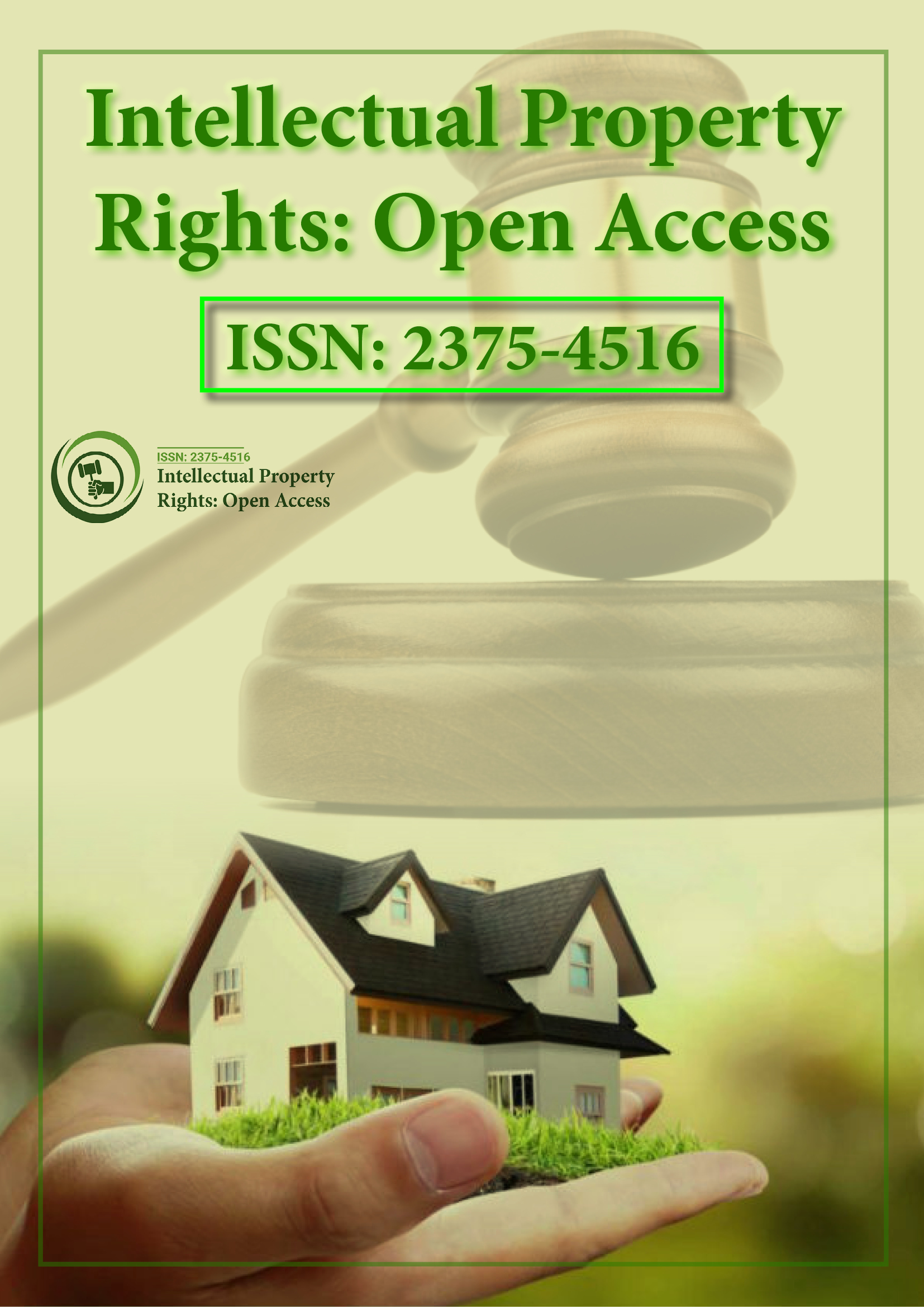Indexed In
- Open J Gate
- RefSeek
- Hamdard University
- EBSCO A-Z
- OCLC- WorldCat
- SWB online catalog
- Publons
Useful Links
Share This Page
Journal Flyer

Open Access Journals
- Agri and Aquaculture
- Biochemistry
- Bioinformatics & Systems Biology
- Business & Management
- Chemistry
- Clinical Sciences
- Engineering
- Food & Nutrition
- General Science
- Genetics & Molecular Biology
- Immunology & Microbiology
- Medical Sciences
- Neuroscience & Psychology
- Nursing & Health Care
- Pharmaceutical Sciences
Commentary - (2023) Volume 11, Issue 1
Identification of Software Patents
Roger Kim*Received: 03-Mar-2023, Manuscript No. IPR-23-20360; Editor assigned: 06-Mar-2023, Pre QC No. IPR-23-20360 (PQ); Reviewed: 22-Mar-2023, QC No. IPR-23-20360; Revised: 29-Mar-2023, Manuscript No. IPR-23-20360 (R); Published: 05-Apr-2023, DOI: 10.35248/2375-4516.23.11.219
Description
Software patents now make up 15% of all patents after a fast increase in their quantity. Only 5% of them are acquired by software publishers; the majority are bought by sizable manufacturing companies in fields recognized for strategic patenting. Neither increases in research and development spending, the employment of computer programmers, nor productivity growth provide a sufficient explanation for the very high increase in software patent propensity over time. The continued rise in software patent propensity is in line with a notable rise in the cost-effectiveness of software patents in the 1990s, which may have been brought on by modifications to the way patent law is applied to computer software.
In two different ways, we look into the value creation or destruction brought on by the advent of software patents in the US. The first examines the cumulative abnormal returns to Information and Communication Technology (ICT) firms around the time of significant court rulings that affected software patents, and the second examines the connection between a company's stock market value, the industry in which it operates, and its software patent holdings. We draw the conclusion that the market first perceived software patents as a bad development. Ex post, more companies across all ICT industries bought these patents, and these companies market valuations were marginally higher than those of companies without software patents. The market value of hardware firms was clearly impacted by the technological significance or quality of patented innovations both before and after the legal changes; however, it is less clear whether the marginal patent right pro se was related to increases in market value, and there are no appreciable valuation effects associated with patents for pure software firms after the change.
The average number of patents granted from a given amount of resources invested in developing innovative products and methods varies widely between industries. For instance, companies in the machinery, electronics, and instrument industries obtained between four and seven patents (of any kind) for every $10 million they invested in research and development in the middle of the 1990s. Comparatively, software companies only obtain one patent for every $10 million spent on research and development. The prevalence of software patents has dramatically increased over the past 20 years, according to existing research, which suggests that software patents are now easier to get and more valuable to businesses. In this study, it examines the connection between firm value and software patenting from two different angles. In order to understand the immediate market effects of changes in the patentability of software on businesses in industries where software patenting is common, we first perform a series of event studies.
Second, we examine the impact of changes in the patentability of software patents using the methods of hall to assess the market value of software patents using several patent-related indicators.
Any utility patent (apart from reissues) issued after 1975 that meets the criteria below is regarded as a software patent. The terms chip, semiconductor, semiconductor bus, or circuit or circuitry should be present. The terms software, computer, and programme are should be in the specification.
Citation: Kim R (2023) Identification of Software Patents. Intel Prop Rights. 11:219.
Copyright: © 2023 Kim R. This is an open access article distributed under the terms of the Creative Commons Attribution License, which permits unrestricted use, distribution, and reproduction in any medium, provided the original author and source are credited.
